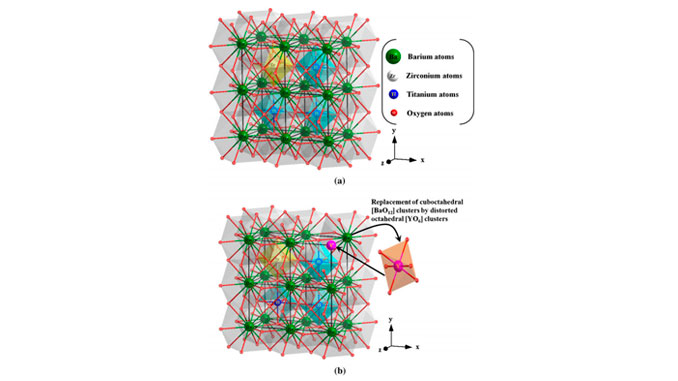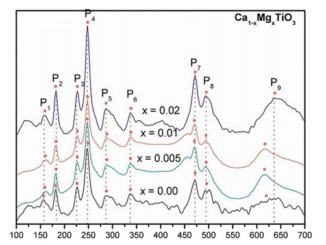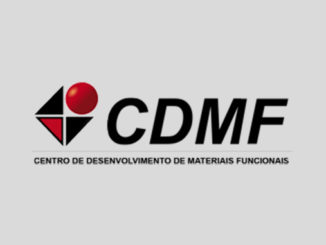
Writers:
Keywords: Ceramics; Spectroscopy; Study
Abstract: In the current article, we studied the effect of yttrium [Y3+] ions’ substitution on the structure and electric behavior of barium zirconate titanate (BZT) ceramics with a general formula [Ba1−xY2x/3](Zr0.25Ti0.75)O3 (BYZT) with [x = 0, 0.025, and 0.05] which were prepared by the solid-state reaction method. X-ray diffraction patterns indicate that these ceramics have a single phase with a perovskite-type cubic structure. Rietveld refinement data confirmed [BaO12], [ZrO6], [TiO6], and [YO6] clusters in the cubic lattice. The Y3+ ions’ effects on the electric conductivity behavior of BZT ceramics as a function of temperature and frequency are described, which are based on impedance spectroscopy analyses. The complex impedance plots display a double semicircle which highlights the influences of grain and grain boundary on the ceramics. Impedance analyses showed that the resistance decreased with the increasing temperature and resulted in a negative temperature coefficient of the resistance property in all compositions. Modulus plots represent a non-Debye-type dielectric relaxation which is related to the grain and grain boundary as well as temperature-dependent electric relaxation phenomenon and an enhancement in the mobility barrier by Y3+ ions. Moreover, the electric conductivity increases with the replacement of Ba2+ by Y3+ ions may be due to the rise in oxygen vacancies.
DOI: 10.1007/s11661-013-1770-3




